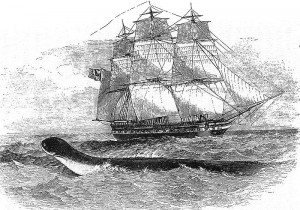No Sea Serpent File Does Not Mean No Sea Serpents
Posted by: Loren Coleman on May 27th, 2010
 Courtesy of the International Cryptozoology Museum
Courtesy of the International Cryptozoology Museum
AOL’s Lee Speigel has written an extended overview on the flap over the Royal Navy saying they can’t find any Sea Serpents in their files.
It is really rather simple, obviously. If you don’t file a case using a cryptid name, of course, you won’t find anything in the cryptid files.
Spiegel writes:
At the International Cryptozoology Museum in Portland, Maine, Loren Coleman cites a case from his “Field Guide to Lake Monsters and Sea Serpents,” that took place in May 1917 during World War I, off the coast of Iceland. Capt. F.W. Dean of the British cruiser Hilary witnessed a strange creature in the water.
Dean thought, at first, he was looking at the periscope of a submarine, Coleman says, until he realized “it had what appeared to be a cow’s head and dorsal fins. It was described as a long-necked creature with a 20-foot-long neck.
“I think it’s obvious that these kinds of records occur during wartime and peacetime — what happens to them is a question.”
Based on his own experiences trying to obtain government documents using Freedom of Information laws, Coleman feels that many such requests result in no available information because the initial queries aren’t specific enough.
The British denial of any sea serpent files, Coleman says, is “sort of a Catch-22” — there might, in fact, be reports of unusual animals, but since they’re not labeled as sea serpents or monsters, they’re never put into a sea monster file.
“It tends to be a standard operating procedure that, if they’re not specifically told it’s a sea monster, they may or may not keep that record.”
 Courtesy of the International Cryptozoology Museum
Courtesy of the International Cryptozoology Museum
HMS Daedalus was a 19th-century warship of the royal navy. In August 1848, Capt. McQuhae of the Daedalus and several of his officers and crew saw a sea serpent, which was subsequently reported in the Times of London.
About Loren Coleman
Loren Coleman is one of the world’s leading cryptozoologists, some say “the” leading living cryptozoologist. Certainly, he is acknowledged as the current living American researcher and writer who has most popularized cryptozoology in the late 20th and early 21st centuries.
Starting his fieldwork and investigations in 1960, after traveling and trekking extensively in pursuit of cryptozoological mysteries, Coleman began writing to share his experiences in 1969. An honorary member of Ivan T. Sanderson’s Society for the Investigation of the Unexplained in the 1970s, Coleman has been bestowed with similar honorary memberships of the North Idaho College Cryptozoology Club in 1983, and in subsequent years, that of the British Columbia Scientific Cryptozoology Club, CryptoSafari International, and other international organizations. He was also a Life Member and Benefactor of the International Society of Cryptozoology (now-defunct).
Loren Coleman’s daily blog, as a member of the Cryptomundo Team, served as an ongoing avenue of communication for the ever-growing body of cryptozoo news from 2005 through 2013. He returned as an infrequent contributor beginning Halloween week of 2015.
Coleman is the founder in 2003, and current director of the International Cryptozoology Museum in Portland, Maine.









